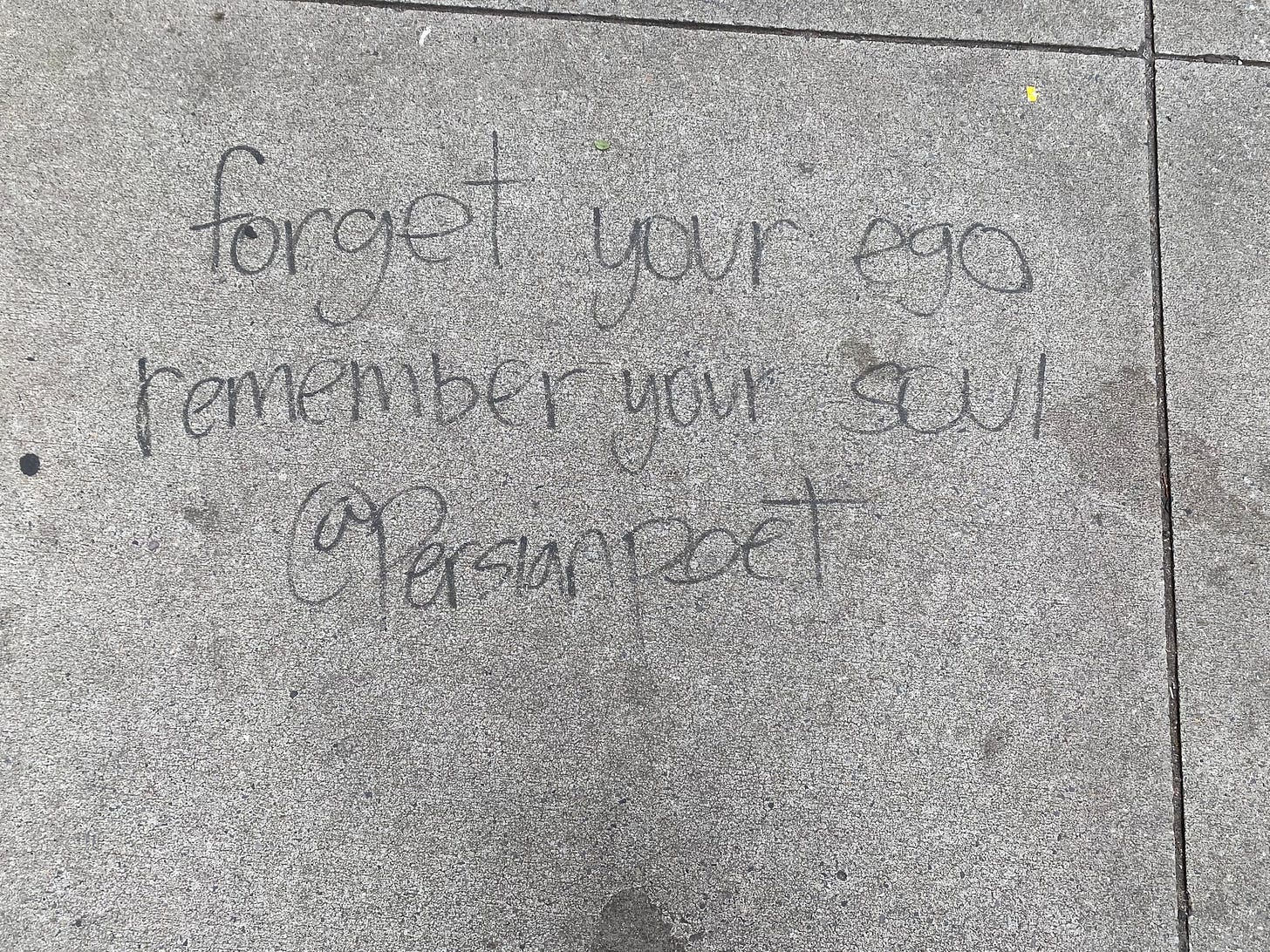Growing the Leader Within: Inner Pathways for Regenerative Leadership
Part III of the Rethinking High Performance Series
In Part I of this series, I challenged outdated notions of high performance in a world wired for overload. In Part II, I explored the systemic shifts leaders must make to build regenerative, thriving workplaces.
Today, in Part III, I turn our attention inward, to the one system leaders have the greatest power to renew: themselves.
The systems we lead can never be healthier than the systems we are.
The organizations we build can never be more regenerative than our own inner landscape.
If we seek to create workplaces where minds of all kinds can flourish, we must begin by cultivating the leader within.
#1: Inner Development Is Non-Negotiable.
Leadership isn’t just a set of behaviours. It is an energy system.
Every conversation, every decision, every action is a signal that carries the imprint of a leader’s internal state.
When we are hurried internally, we propagate urgency externally.
When we are disconnected emotionally, we amplify disconnection in our teams.
When we are scattered in attention, we breed confusion across systems.
And those around us sense and react to these energy signals we emit constantly.
As Fritjof Capra so eloquently puts it in “The Systems View of Life”:
"The self is a process, not a thing. It is a process of self-generation within a network of relationships."
Our nervous systems, our emotional patterns, and our attentional rhythms are carving out the structures and landscapes of our environment, often without conscious awareness or intention.
As we deepen our awareness and become more whole, we hold space for others to do the same.
Imagine what becomes possible for us, our teams, and our organizations when we can attune to and intentionally expand these energy capacities?
#2: The Leader is a Living System.
Leadership isn’t static.
Like every thriving ecosystem, leadership lives in dynamic balance—a constant dance between attention and adaptation, between holding steady and letting go.
It is this living, breathing quality that makes leadership regenerative.
Not rigid.
Not performative.
Not formulaic.
But vibrantly, vigorously alive.
Loosen your grip on the image of yourself as a warrior leader, charging from the forefront. As alluring as that one glorious moment of charging forward is, later on that same storyline is rife with scenes of destruction, loss and disillusionment.
Instead, envision for a moment YOU as a living ecosystem – alive and responsive to your inner landscape and to your surroundings, dynamic and influential as you:
Breathe into the spaces between reflection and relationships
Shift and flow across emotion and attention
Adapt to complexity not through control, but through conscious tending of the larger system at work
I have a growing conviction, based on my observations, lived experiences and research, that leadership is less about commanding and more about cultivating the potential of the systems we inhabit.
Starting with our inner self.
Magic in leadership doesn’t erupt in grand gestures. It grows quietly, almost invisibly, through the way we tend to the living systems around us.
It grows when leaders nurture the unseen mycorrhizal networks of trust, noticing the connections that lie beneath the surface. It anchors when they deepen the mangrove roots of stability, holding firm even as tides of change rise and fall.
It flourishes when they foster symbioses.
Much like in coral reefs, it is these intricate and interdependent relationships in organizations that spark collective innovation.

These living ecosystems offer profound lessons for how leadership regenerates itself. We’ll return to these in our journey ahead.
In my own work, I often anchor back into this simple truth:
“We are not machines to be optimized.
We are ecosystems to be nurtured.”
Organizations are living systems.
And leadership is the soil in which they grow—or wither.
Regenerative leadership tends to these systems with care, not conquest.
#3: Inner Capacities Shape Outer Leadership.
The inner capacities we nurture determine the ecosystems we create.
When leaders cultivate deep presence, it expands perception. They sense patterns and possibilities others miss.
When they anchor into purpose, it fuels principled action. And values move from ideas to embodied choices.
When they grant themselves permission to show up authentically, they invite real participation. And teams feel safe to contribute.
When they stay open to possibilities, they unlock systemic perspective, seeing beyond silos into living wholes.
Inner work isn’t a luxury for the privileged few, or a shameful private trial to be endured in silence.
It is the regenerative heart of high performance.
As I shared in Being a More Humane Leader, leadership starts with the courage to tend to the ground of our own inner being before cultivating the grounds for transformation in others.
#4: Listening to the System Changes the System.
I once worked with an organization where frustration ran high with a business unit seen as underperforming.
The regional leadership felt the employees were passive and disengaged.
They instilled new leaders, tasking them to drive accountability and performance with urgency. What they got instead was fractured trade relations, eroding market share, more resignations and an employer reputation in tatters.
None of the urgent, high-pressure actions worked.
The crisis was real. And getting worse.
I partnered with the new leader who was strategic and empathetic. We both sought to understand what was really going on. It was only when we paused to listen with compassion to the emotional system that a deeper truth emerged.
What was once a happy productive workplace had been torn apart by rapid and unexplained leader changes and reorganization.
Employees were silenced by years of subtle erasure, where showing initiative and getting noticed had often backfired.
Employees expressed fear and grief when we reached out – big emotions that had gone unheard, unprocessed and unaddressed thus far.
Did the organization lack strategic nous, and need developmental support on business planning? Yes. Were the employees lazy and unmotivated? Most definitely not.
The soil had hardened over time.
Fear had taken root, forcing everyone to hunker down in survival mode.
Rather than force surface change, we chose to lean in, to acknowledge and address the emotional truth of the system first. We then wove care and compassion into the new leader’s leadership signature through townhalls, coffee chats and in 1-1 interactions.
In dialogue, employees sensed the positive change in the emotional charge, regained their agency and reframed their identity.
The energy shifted.
Ownership returned.
And performance rebounded.
But it didn’t begin by turning up the heat and bringing things to a boil, then hoping for results amid that frenetic action.
It began with presence, the willingness to perceive the real, living system underneath the symptoms. And bloomed with compassionate action, meeting the system where it was at and nurturing it back into high performance.
This is why inner capacities matter.
Without them, leaders react to symptoms.
And with them, leaders respond to signals.
#5: Grow the Leader Within Through 4 Inner Pathways.
Over the coming weeks, I’ll explore the inner pathways that regenerative leadership demands:
How cultivating presence expands systemic perception
How anchoring into purpose fuels principled action
How granting permission invites authentic participation
How opening to possibilities unlocks transformative perspective
Each pathway is not a checklist to master.
It is a living practice to return to, a way of being as you move through the world.
As I wrote in Why I Dance in the Rain, leadership is less about resisting the storms and more about learning to move with them, awake and alive.
I invite you to reflect with me.
Before we dive deeper, I invite you to sit with a few gentle questions:
Where is your attention most alive in your leadership today? Where is it most absent?
What emotions flow easily through your leadership? What emotions do you brace against?
When was the last time reflection shaped your choices more than reaction?
How often do you perceive relationships as a living field to sense, rather than a transaction to manage?
These are not questions to solve, simply seeds to plant as you grow your awareness.
As David Whyte writes in Start Close In:
Start close in,
don’t take the second step
or the third,
start with the first
thing
close in,
the step
you don’t want to take.Start with
the ground
you know,
the pale ground
beneath your feet,
your own
way of starting
the conversation.
Leadership is grown not in urgent moments, but in the quiet tending of our inner gardens.
By returning, again and again, to the living ground beneath our feet.
In my next piece, I explore how presence expands systemic perception, sensing not just what is seen but also what is signalling beneath the surface and what is hoping to emerge into a new future.
I hope you’ll keep walking this path with me and share your reflections along the way.
_______________________________________________
Hi, I’m Abby.
I work with leaders across Asia Pacific to grow thriving, regenerative workplaces, starting from the living systems within.
Whether you’re nurturing a new leadership culture, reigniting a team’s engagement, or building humane systems for sustainable high performance, I’d love to partner you.
DM me, comment or connect with me on LinkedIn.
Let’s build ecosystems where people, and possibilities, can flourish.







